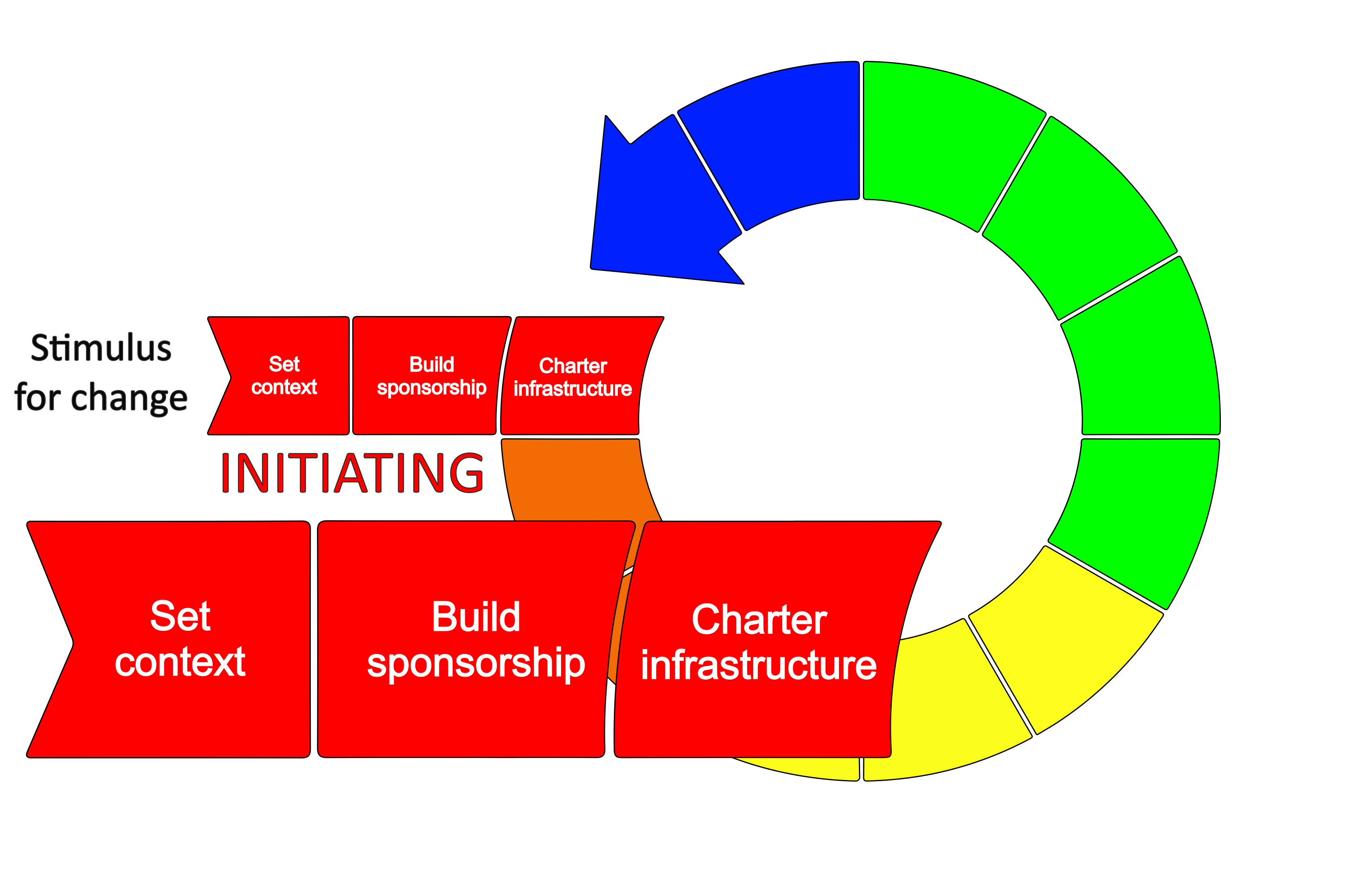IDEAL Initialising phase

During the initialising phase of the IDEAL process, the infrastructure for a successful change program is established. This includes defining:
- The goals of the TMMi implementation
- The expected results and
- What needs to be contributed by different stakeholders
The goals of a TMMi implementation must be in line with the quality and organisational goals. It is not always possible, initially, to define them in a SMART way (Specific, Measurable, Achievable, Realistic and Time-based) so they may be addressed in more detail during the establishing phase.
The initialising phase requires strong commitment from senior management (including from the test, information and communication technology and business management departments). The initialising phase contains three stages:
- Set the context for change
- Build up sponsorship
- Charter the infrastructure required
The ‘stimulus for change’ is a “quasi-activity”. While it is not, technically, a part of any process, it is the condition, event, or direction indicating that some sort of change is needed. It therefore initiates an IDEAL cycle.
The organisation needs to understand that change is necessary, and this understanding can arise from a number of sources including:
- Dissatisfaction with current testing
- Unexpected incidents
- Changing circumstances
- TMMi assessment
- Market trends
Change needs to contribute to success of the organisation, and must complement existing quality and organisational goals. In the situation we are currently discussing (TMMi), gaps in the test process, or a failure to achieve a required TMMi Maturity Level, are the most likely stimuli for change.
Set Context
To set the context for changes to be implemented, there are a number of considerations, including:
- How does the change fit with quality and business strategies?
- Which specific organisational goals will be met by the improvements?
- How will current projects be affected?
- What objectives are to be tackled – (for example, reduce defects or reduce testing time)?
As the implementation project progresses, the context and the associated effects will become more apparent, but a clear framework must be established to begin with.
Test policy
Part of setting the context for the test process improvements is to have clearly defined goals for the programme – if there are no goals recorded, it will be very difficult, if not impossible, to determine if the improvement work has been successful. And, of course these goals need to be known and understood by all stakeholders. The test policy is a document that (amongst other things) records the goals, is agreed upon by all stakeholders and is distributed to stakeholders within and outside testing.
The test policy, derived from the organisational quality policy, is one of the main inputs to the ‘set context’ activity because it records the organisation’s general philosophy regarding testing and the overall direction the organisation wants to take (and why).
We cover the test policy in more detail earlier in the course, and it is worth reminding yourself of the material Process Area 2.1 SG 1 – Establish a test policy after you have completed this section of setting the context for improvement.
However, one of the learning objectives of this part of the course is to be able to summarise the contents of a typical test policy, so here is a list of statements that may be included:
- A definition of testing
- A definition of debugging (fault localisation and repair)
- Basic views regarding testing and the testing profession
- The objectives and added value of testing
- The quality levels to be achieved
- The level of independence of the test organisation
- Required training and certifications
- Tester ethics
- Applicable standards
- A high-level definition of the test process
- The key responsibilities of testing
- The organisational approach to, and objectives of, test process improvement
Build Sponsorship
Building sponsorship includes gaining support from responsible (senior) managers and making sure they are willing to provide resources for the activities to come.
All stakeholders will be affected by the changes, so sponsorship is key to encouraging active participation from everybody, and to promote the project during times of resistance and stress.
Charter Infrastructure
An infrastructure is required to implement the change project. The infrastructure will include defined roles and responsibilities for conducting the work.
Typically, the infrastructure includes a project board covering several improvement teams. This would normally consist of:
- A sponsor (or sponsors)
- A project manager
- External consultants (if needed)
- A TMMi expert
The project board is responsible for the improvement programme, plans, milestones and final report. It has the ultimate power to decide on actions and is the highest escalation point.
